The 10 Oldest Constitutions That Shaped the World: Ancient Laws, Lasting Legacies
| Summary |
The world’s oldest constitutions are not just historical relics—they are the foundation of modern governance, shaping legal systems and inspiring nations. Rooted in revolutionary ideals, they introduced fundamental principles like the rule of law, separation of powers, and human rights, embedding justice and liberty into society.
Beyond their origins, these constitutions have fostered a culture of legal supremacy over arbitrary rule, influencing global democracy and justice. Concepts like legal equality, freedom of speech, and fair trials set lasting benchmarks for governance.
More than just ancient texts, these living documents continue to guide debates on law and human rights. Their endurance reflects humanity’s pursuit of dignity, freedom, and equitable societies, proving that their influence remains as powerful today as when they were first written.
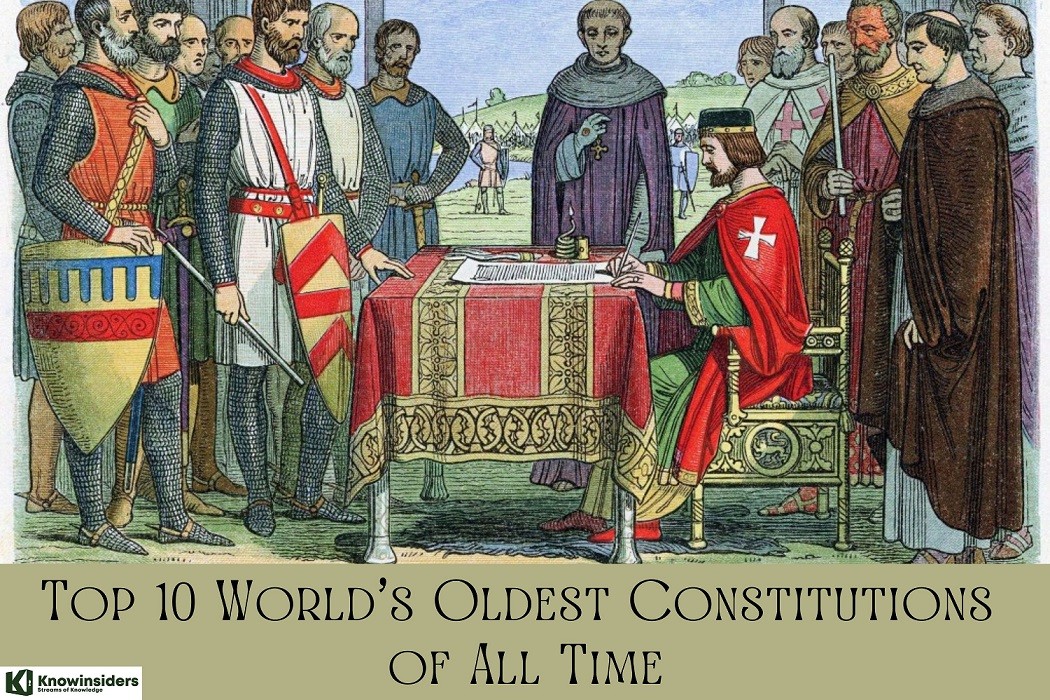 |
| Top 10 World's Oldest Constitutions of All Time |
A Brief History of Constitutions
Ancient Beginnings:
- Mesopotamia & Egypt: Early written laws, like Hammurabi’s Code (1754 BCE), set governance principles.
- Greece & Rome: Athens introduced democracy (508 BCE), while Rome’s Republic (509 BCE) created separation of powers and codified laws (Twelve Tables, 450 BCE).
Medieval & Early Modern Developments:
- Magna Carta (1215): Limited monarchy’s power, laying the foundation for constitutionalism.
- Parliamentary Growth: England’s Bill of Rights (1689) strengthened government accountability.
The Enlightenment & Revolution:
- Thinkers like Locke and Montesquieu promoted democracy, separation of powers, and rights.
- U.S. Constitution (1787): A model for federalism, checks and balances, and rights.
- French Revolution (1789): Inspired legal frameworks worldwide, including the Napoleonic Code (1804).
19th-21st Century:
- Global Expansion: New nations drafted constitutions post-independence, blending Western and local traditions.
- Modern Revisions: Amendments adapt laws to evolving societies, influenced by human rights and international law.
Constitutions continue to evolve, shaping governance and protecting freedoms worldwide.
Top 10 World's Oldest Constitutions in History
1. The Constitution of San Marino
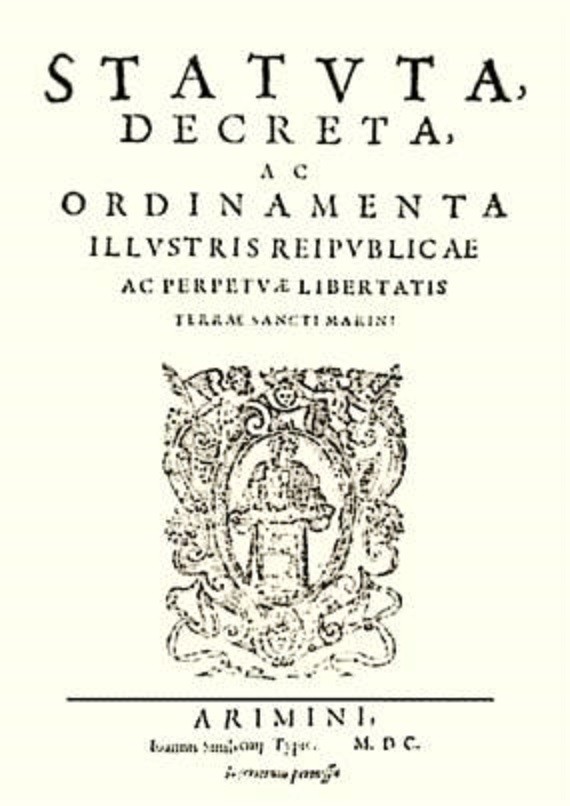 |
| The Constitution of San Marino |
Date Ratified: October 8, 1600
Last Amended: 1600
Nestled within the serene confines of San Marino, the oldest surviving sovereign state and constitutional republic in the world, lies a document that stands as a testament to enduring principles of governance. The Constitution of San Marino, ratified on October 8, 1600, embodies the spirit of independence and self-governance that has characterized this microstate for centuries.
Crafted during a time of political upheaval and shifting alliances in Europe, San Marino's constitution reflects the desire of its citizens to preserve their unique identity and sovereignty. With its emphasis on democratic principles, separation of powers, and the rule of law, the constitution provided a solid foundation for the republic's governance.
Despite the passage of time, the Constitution of San Marino remains remarkably unchanged since its ratification in 1600. While amendments have been made over the centuries to adapt to modern realities, the core principles enshrined in the document continue to guide the republic's institutions and shape its political landscape.
2. The Constitution of the United States
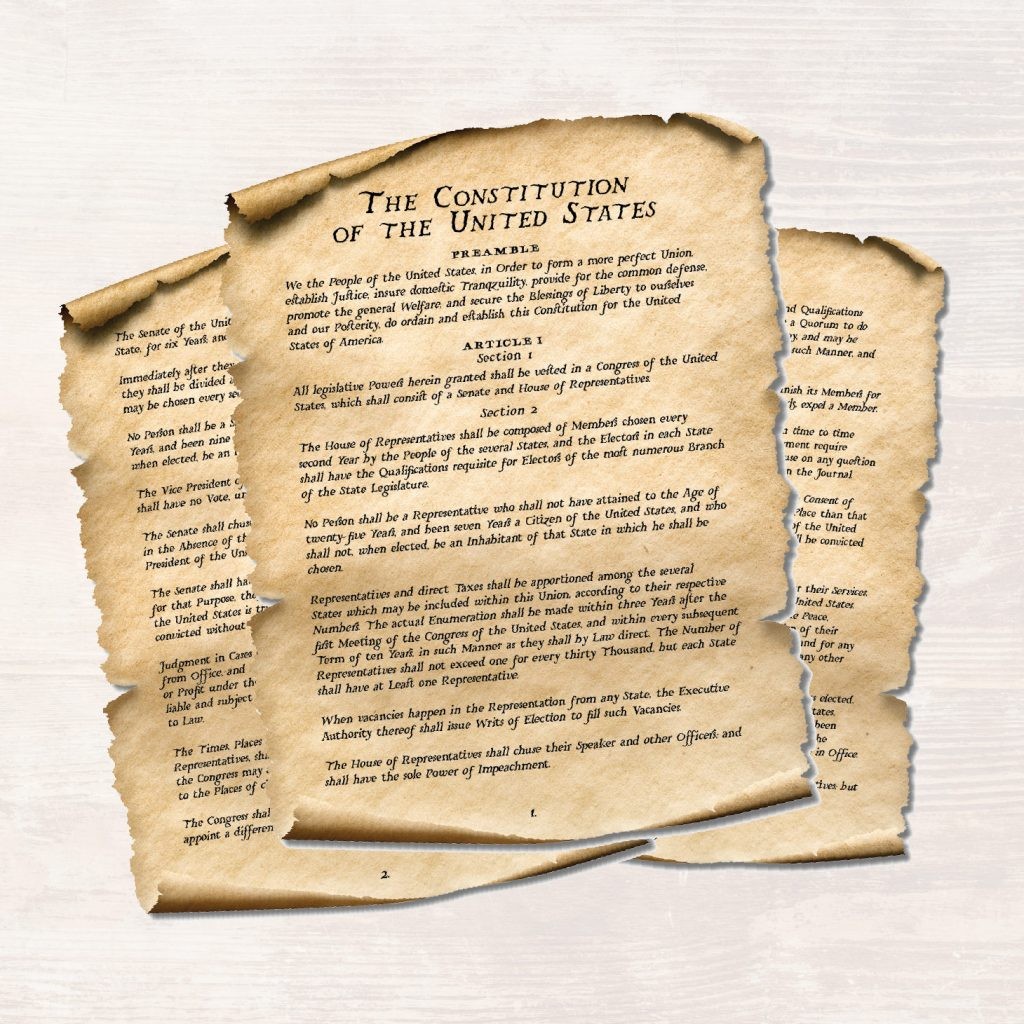 |
| The Constitution of the United States |
Date Ratified: September 17, 1787
Last Amended: December 6, 1992
Arguably one of the most influential documents in modern history, the Constitution of the United States stands as a beacon of democracy and a model for constitutional governance around the world. Ratified on September 17, 1787, this seminal document laid the foundation for a nation built on the principles of liberty, democracy, and the rule of law.
The U.S. Constitution, which the Founding Fathers crafted during the Constitutional Convention in Philadelphia, established a system of government that balanced power among its branches and protected the rights of its citizens. With its ingenious system of checks and balances, the constitution has endured for over two centuries, weathering periods of crisis and change while remaining a symbol of national unity and resilience.
Despite its age, the U.S. Constitution remains a living document, capable of adapting to the evolving needs of society. Through the amendment process, the constitution has been amended 27 times, reflecting changing social norms, values, and political realities while preserving its fundamental principles and values.
3. The Constitution of Norway
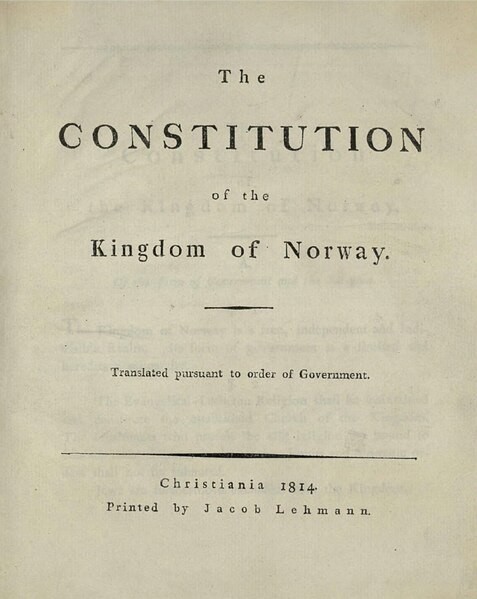 |
| The Constitution of Norway |
Date Ratified: May 16, 1814
Last Amended: February 20, 2014
In the rugged fjords and pristine landscapes of Scandinavia, Norway's constitution stands as a testament to the nation's enduring commitment to democracy and the rule of law. Ratified on May 16, 1814, the Constitution of Norway emerged during a period of political upheaval in Europe, as the Norwegian people sought to assert their independence and sovereignty.
Inspired by the principles of liberalism and constitutional monarchy, Norway's constitution established a system of government that balanced power between the monarchy and the people, while guaranteeing fundamental rights and freedoms. With its emphasis on popular sovereignty and the separation of powers, the constitution laid the groundwork for a stable and prosperous democracy in the Nordic region.
Despite its age, Norway's constitution remains a dynamic and evolving document, capable of adapting to the changing needs of society. With its last major amendment in 2014, the constitution continues to reflect Norway's commitment to democracy, human rights, and the rule of law, serving as a model for constitutional governance around the world.
For over two centuries, Norway's constitution has provided a sturdy framework for governance, fostering stability and progress in the Nordic region.
4. The Constitution of Haiti
 |
| The Constitution of Haiti |
Date Ratified: March 29, 1805
Last Amended: 2012
Haiti's constitution is a testament to the resilience of its people and their enduring quest for liberty and equality. Ratified on March 29, 1805, following the Haitian Revolution, this document marked the birth of the first independent nation in Latin America and the Caribbean, as well as the first post-colonial independent black-led nation in the world.
Crafted in the crucible of revolution and inspired by the principles of the French Revolution, Haiti's constitution abolished slavery and affirmed the equality of all citizens, regardless of race. However, political instability and external pressures have led to numerous amendments over the years, reflecting the nation's turbulent history and ongoing struggle for democracy and development.
Despite these challenges, Haiti's constitution remains a symbol of hope and aspiration for its people, embodying the principles of freedom, justice, and democracy. With its last major amendment in 2012, the Constitution continues to serve as a framework for governance and a beacon of hope for a better future.
5. The Constitution of Liechtenstein
 |
| The Constitution of Liechtenstein |
Date Ratified: October 5, 1921
Last Amended: October 20, 2003
Despite its diminutive size, Liechtenstein boasts a constitution that reflects the nation's commitment to democracy and the rule of law. Ratified on October 5, 1921, the Constitution of Liechtenstein established a constitutional monarchy with a parliamentary system of government, laying the groundwork for a stable and prosperous democracy in the heart of Europe.
Inspired by the principles of liberalism and constitutionalism, Liechtenstein's constitution guarantees fundamental rights and freedoms, while also preserving the monarchy as a symbol of national unity and continuity. With its emphasis on the separation of powers and the rule of law, the constitution has provided a solid foundation for governance and political stability in the tiny Alpine principality.
Despite its age, Liechtenstein's constitution remains a dynamic and evolving document, capable of adapting to the changing needs of society. With its last major amendment in 2003, the constitution continues to reflect Liechtenstein's commitment to democracy, human rights, and the rule of law, serving as a model for constitutional governance in Europe.
6. The Constitution of Poland
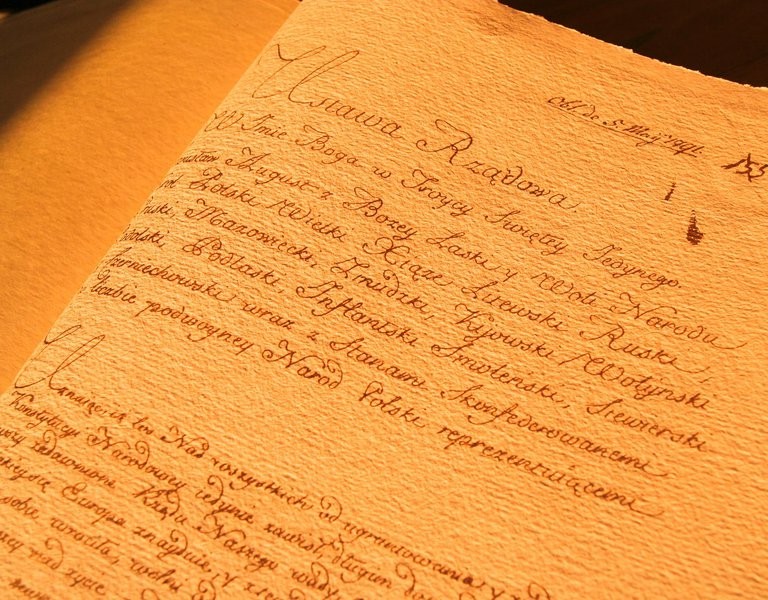 |
| The Constitution of Poland |
Date Ratified: May 3, 1791
Last Amended: April 2, 1997
Poland's constitution, born out of the ideals of the Enlightenment, has weathered centuries of upheaval to emerge as a symbol of national identity and resilience. Ratified on May 3, 1791, the Constitution of Poland was one of the first modern constitutions in Europe, inspired by the principles of democracy, equality, and the rule of law.
Crafted during a period of political reform and national revival, Poland's constitution established a system of government that balanced power between the monarchy and the legislature, while guaranteeing fundamental rights and freedoms for all citizens. Despite its progressive provisions, the constitution was short-lived, as external pressures and internal divisions led to its eventual demise.
Despite its brief existence, Poland's constitution remains a source of inspiration and aspiration for its people, embodying the principles of freedom, democracy, and national sovereignty. With its last major amendment in 1997, the constitution continues to serve as a symbol of Poland's enduring commitment to democracy, human rights, and the rule of law, paving the way for a brighter future.
7. The Constitution of Switzerland
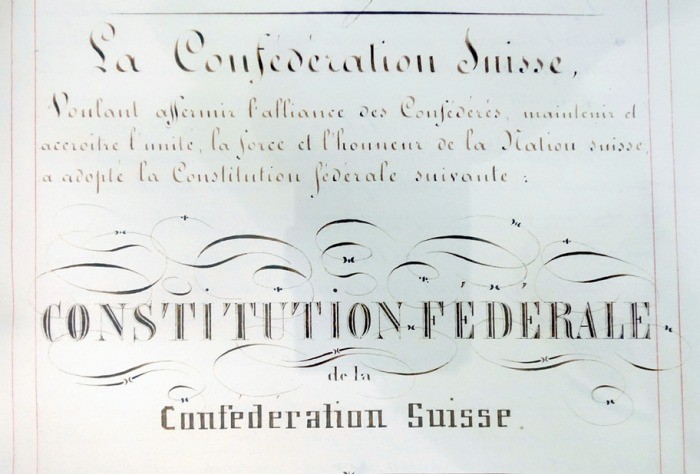 |
| The Constitution of Switzerland |
Date Ratified: September 12, 1848
Last Amended: January 1, 2014
Renowned for its system of direct democracy, Switzerland's constitution reflects a commitment to consensus-building and pluralism. Ratified on September 12, 1848, the Constitution of Switzerland established a federal state with a unique system of government that balances power between the federal government and the cantons, while also preserving the rights of individuals and minority groups.
Inspired by the principles of federalism and decentralization, Switzerland's constitution guarantees a high degree of autonomy for its cantons, allowing them to govern according to their own traditions and values. With its emphasis on direct democracy, including the use of referendums and initiatives, the constitution ensures that the Swiss people have a direct voice in the governance of their country.
Despite its age, Switzerland's constitution remains a dynamic and evolving document, capable of adapting to the changing needs of society. With its last major amendment in 2014, the constitution continues to reflect Switzerland's commitment to democracy, diversity, and the rule of law, serving as a model for constitutional governance around the world.
Read More: Top 7 Most Breathtaking Places to Visit in Switzerland
8. The Constitution of Denmark
 |
| The Constitution of Denmark |
Date Ratified: June 5, 1849
Last Amended: June 5, 1953
Denmark's constitution, ratified on June 5, 1849, stands as a testament to the nation's commitment to democracy, human rights, and the rule of law. Crafted during a period of political reform and national awakening, the Constitution of Denmark established a constitutional monarchy with a parliamentary system of government, laying the groundwork for a stable and prosperous democracy in the Nordic region.
Inspired by the principles of liberalism and constitutionalism, Denmark's constitution guarantees fundamental rights and freedoms for all citizens, while also preserving the monarchy as a symbol of national unity and continuity. With its emphasis on the separation of powers and the rule of law, the constitution has provided a solid foundation for governance and political stability in the kingdom.
Despite its age, Denmark's constitution remains a dynamic and evolving document, capable of adapting to the changing needs of society. With its last major amendment in 1953, which introduced gender equality in succession to the throne, the constitution continues to reflect Denmark's commitment to democracy, human rights, and the rule of law, serving as a model for constitutional governance in Europe.
9. The Constitution of Greece
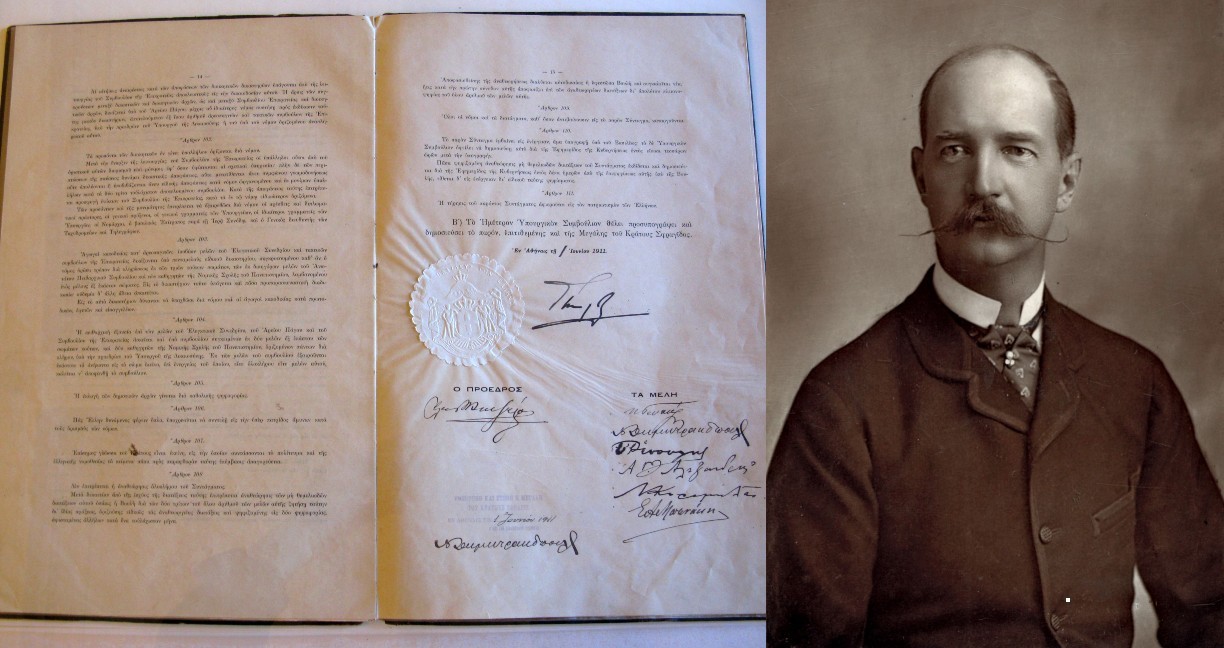 |
| The Constitution of Greece |
Date Ratified: December 3, 1975
Last Amended: June 27, 2008
Rooted in ancient democratic traditions, Greece's modern constitution reflects a balance between tradition and progress in the birthplace of democracy. Ratified on December 3, 1975, following the collapse of military rule, the Constitution of Greece established a democratic republic with a parliamentary system of government, laying the groundwork for a new era of freedom and democracy in the Hellenic Republic.
Inspired by the principles of democracy, human rights, and the rule of law, Greece's constitution guarantees fundamental rights and freedoms for all citizens, while also preserving the cultural and historical heritage of the nation. With its emphasis on popular sovereignty and the separation of powers, the constitution has provided a solid foundation for governance and political stability in Greece.
Despite its relatively recent ratification, Greece's constitution has undergone numerous amendments to adapt to the changing needs of society. With its last major amendment in 2008, which introduced reforms to the electoral system and the judiciary, the constitution continues to serve as a symbol of Greece's enduring commitment to democracy, human rights, and the rule of law, paving the way for a brighter future.
10. The Constitution of Canada
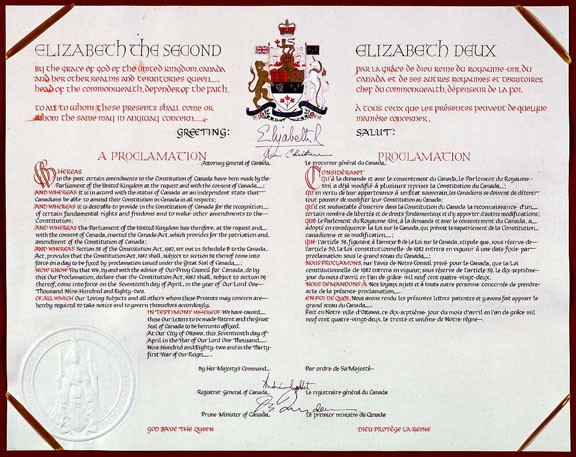 |
| The Constitution of Canada |
Date Ratified: July 1, 1867
Last Amended: July 1, 1982
Canada's constitution, ratified on July 1, 1867, marks the birth of a nation founded on the principles of democracy, federalism, and the rule of law. Crafted during a period of political negotiation and compromise, the Constitution of Canada established a federal state with a parliamentary system of government, laying the groundwork for a diverse and inclusive democracy in North America.
Inspired by the principles of liberalism and multiculturalism, Canada's constitution guarantees fundamental rights and freedoms for all citizens, while also recognizing the rights of indigenous peoples and minority groups. With its emphasis on federalism and the division of powers between the federal government and the provinces, the Constitution has provided a solid foundation for governance and political stability in the Great White North.
Despite its age, Canada's constitution remains a dynamic and evolving document, capable of adapting to the changing needs of society. With its last major amendment in 1982, which patriated the constitution and introduced the Canadian Charter of Rights and Freedoms, the constitution continues to reflect Canada's commitment to democracy, human rights, and the rule of law, serving as a model for constitutional governance around the world.
The Lasting Impact of the World’s Oldest ConstitutionsMore than historic texts, enduring constitutions are living legacies of legal evolution, shaping societies for centuries. They have influenced everything from individual rights to government structures, adapting to social changes, technological advancements, and ideological shifts. Through amendments and reinterpretations, these constitutions have remained relevant, guiding nations through wars, revolutions, and peace. Their resilience demonstrates how laws can evolve while upholding core principles of justice and stability. Beyond their own societies, these foundational texts inspire newer nations, offering lessons on balancing flexibility with tradition. Their legacy underscores the power of well-crafted laws to shape governance, protect rights, and guide humanity toward progress. |
Conclusion
These venerable documents stand as testaments to the enduring power of ideas and the resilience of human endeavor. From the shores of the Mediterranean to the vast expanses of North America, they continue to shape the course of history and inspire generations to come.
 Top 10 Most Expensive American Girl Dolls Of All Time Top 10 Most Expensive American Girl Dolls Of All Time Many American girl dolls cost up to thousands of USD. Check out full details of top 10 most expensive American girl dolls of all time. |
 Top 10 Oldest Football Clubs In England Top 10 Oldest Football Clubs In England With its oldest football team, the United Kingdom has been particularly enthralled with this wonderful game. Which football clubs in England are the oldest? |
 Top 10 Youngest Football Clubs In England Top 10 Youngest Football Clubs In England Which football team is the youngest in England? You will surprised to know that the youngest one was founded 10 yearrs ago. |
 Top 10 Best Tamagotchi Of All Time - Japanese Handheld Game Top 10 Best Tamagotchi Of All Time - Japanese Handheld Game Choosing the proper Tamagotchi can be a joyful but difficult decision, determined by its features and how they fit into the user's lifestyle. Each variety ... |


























